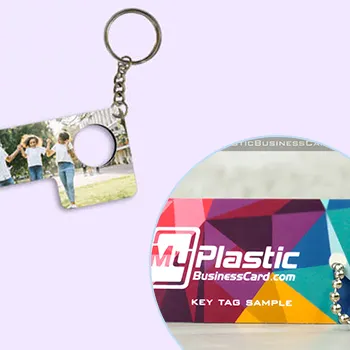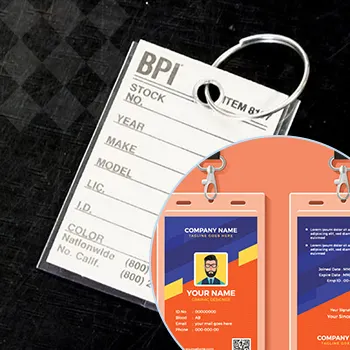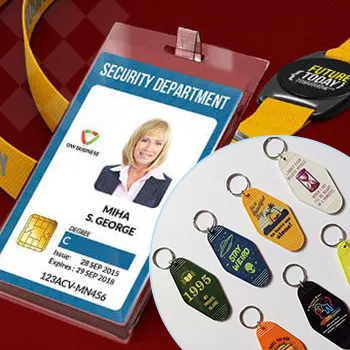Best Practices: Guidelines Storage Plastic Cards Care Maintenance
Table of Contents []
Guidelines Storage Plastic Cards
Maximizing the Lifespan of Your Plastic Cards with Proper Storage

At Plastic Card ID , we understand that every plastic card your customer handles is a representation of your brand's commitment to quality. To ensure that each card remains in pristine condition from the moment it leaves your hands to the countless times it will be used, we have developed comprehensive guidelines for proper storage. Our carefully curated best practices are not only easy to follow, but they are also designed to protect your cards from damage, wear, and tear, thereby maintaining their functionality and appearance.
Plastic cards are versatile tools that serve a myriad of purposes-from membership and gift cards to loyalty and access cards. These pieces are integral to daily operations for many businesses. That's why taking the right steps to store them appropriately is not just a recommendation; it's a necessity.
To get started on implementing these best practices, or if you have any questions, give us a call at 800.835.7919 . We're ready to assist you with new orders or provide any information you need to ensure the longevity of your plastic cards.
The Basics of Plastic Card Storage
Storing your plastic cards correctly begins with understanding the basics. The material composition of these cards makes them susceptible to certain environmental factors, such as temperature fluctuations and humidity. To avoid warping, discoloration, and other forms of degradation, it is vital to store cards in a cool, dry place out of direct sunlight.
Furthermore, the manner in which you stack or organize your cards plays a significant role in preserving their structure. Always stack cards flat and avoid placing heavy objects on top of them to prevent bending and cracking.
Organizational Strategies for Optimal Storage
Organization is key to ensuring quick access and efficient use of your plastic cards. Invest in storage solutions like card drawers or holders that not only protect your cards but also keep them neatly arranged. Labeling your storage sections by card type or purpose can streamline your process, making it easier to find what you need, when you need it.
Remember, the less time cards spend out of storage, the less they are exposed to potential damage. Ensure that your workflow includes returning cards to their proper place immediately after use.
Protective Materials for Added Security
For added protection, consider the use of card sleeves or protective pockets. These are especially beneficial for cards that are not used frequently, as they provide an extra layer of defense against scratches and dirt. Additionally, shields with anti-static properties can help prevent the buildup of static electricity, which can sometimes damage the card's magnetic strip or embedded chip.
When choosing protective materials, select quality over cost-saving options. The right kind of protection is an investment into the longevity and ongoing functionality of your plastic cards.
Handling Practices to Extend Card Life
Even the most robust storage guidelines are ineffective if the cards are not handled properly. It's crucial to educate your team on how to handle cards to avoid fingerprints, smudges, and potential damage during everyday handling. Always grasp the cards by the edges and avoid touching the magnetic stripe or chip area.
Proper handling should extend to the loading and unloading of cards into printers or other devices. Ensure that hands are clean and dry to prevent unnecessary transfer of oils or humidity to the card surface.
Simple Recycling Tips
When the time comes to dispose of old plastic cards, being mindful of the environment is important. While we don't elaborate extensively on eco-friendly practices, recycling should still be a consideration. Check with local recycling programs to see if they accept plastic cards, and be sure to remove any elements that aren't recyclable, such as holographic foils, before recycling.
Cards that cannot be recycled traditionally can often be repurposed or donated for other uses. A bit of creativity can help in finding new life for these materials thereby reducing waste.
Deep Dive into Card Storage Environments

Proper storage goes beyond simply placing cards in a drawer-the environment in which they are stored is equally crucial. Variables such as temperature, humidity, and exposure to certain chemicals can have adverse effects on plastic cards. At Plastic Card ID , we stress the importance of maintaining an optimal storage environment to preserve the integrity of your plastic cards.
Understanding the delicate nature of these cards is fundamental in making informed decisions about where and how they should be stored. Not all storage locations are created equal, and our guidelines help identify the best possible environment to help your cards last longer.
For any further information on creating the right environment for your cards, or to place an order, don't hesitate to reach out to us at 800.835.7919 . Our team is always on hand to provide the support and products you need.
Temperature Control for Preventing Damage
Maintaining a consistent, moderate temperature is essential to prevent the thermal degradation of plastic cards. Excessive heat can cause cards to warp or become brittle, while extreme cold can make them more susceptible to cracks.
Ideal storage temperature should be between 50F to 70F (10C to 21C). This range helps ensure that the physical and functional aspects of the card are kept intact.
Humidity and Its Effects on Card Longevity
Plastic cards are hygroscopic, meaning they can absorb moisture from the environment. High humidity levels can lead to card swelling, while low humidity might cause them to become brittle. Aim for a relative humidity level of 30% to 50% in your storage area.
Using dehumidifiers in high-humidity regions or humidifiers in dry areas can help maintain the necessary balance to protect your cards.
Shielding from Direct Light and Contaminants
Direct sunlight or bright lighting can cause discoloration and fade the print on plastic cards. Store cards away from windows and bright lights to prevent UV damage. Similarly, exposure to chemicals, oils, and other contaminants can erode the card material and printed surfaces.
Incorporate physical barriers such as opaque containers or storage boxes to guard against these environmental factors, ensuring your cards remain clean and vibrant.
Strategic Placement to Minimize Risk
Think critically about the placement of your storage solutions within the environment. Choose locations away from vents, windows, or machinery that could expose the cards to temperature changes, direct lighting, or pollutants. This strategic placement further cements your commitment to maintaining the highest quality for every card.
Also, consider the flow of your workspace; storing cards within reach but out of high-traffic areas reduces the risk of accidental damage from bumps, spills, or falls.
Assessing Your Storage Environment Regularly
It's not enough to set up an ideal environment and then forget about it. Regular checks are necessary to ensure conditions remain optimal for your plastic cards. This includes monitoring temperature and humidity levels, checking for external damages, and upgrading storage methods as needed.
Setting up routine assessments can prevent a multitude of potential issues before they arise, saving you time and maintaining the reputation of your brand's high standards.
Effective Management and Retrieval Systems for Plastic Cards

How efficiently you can store, manage, and retrieve your plastic cards plays a role in their overall upkeeping. An effective card management system not only keeps your cards secure but also makes them easily accessible to your staff when needed. At Plastic Card ID , we advocate for a systematic approach to card management which minimizes handling time and maximizes productivity.
Incorporating an organizational system that works for your specific needs is critical. Be it through digital tracking or a manual inventory, our guidelines emphasize the importance of a streamlined process.
If you're in need of tips for setting up management systems or looking for card storage supplies, our team is always ready to assist at 800.835.7919 . We're here to ensure the process is as smooth as possible for your operations.
Implementing a Cataloging System
Cataloging your plastic cards by type, purpose, or client can drastically improve your retrieval times. Utilize a system that makes the most sense for how your cards are used, whether chronological, alphabetical, or categorical.
Clearly labeled sections or digital inventories can reduce the time spent searching for specific cards, minimizing handling and potential damage.
Physical vs. Digital Logging
The choice between physical logs or a digital system often depends on the volume of your card inventory. While physical logs can be sufficient for smaller collections, a digital system can provide faster access and easier updates for larger inventories.
Consider the pros and cons of each method and choose one that complements your operational flow. Always back up digital records and keep physical logs in a safe, accessible place.
Training Staff on Retrieval Procedures
Part of effective management is ensuring that all staff members are trained on proper retrieval procedures. This includes how to navigate the storage system, handle the cards correctly, and return them to their rightful place.
Regular training sessions can keep staff updated on any changes in the system, as well as reinforce best practices in handling and storage.
Automated Systems for Larger Operations
For those with extensive card inventories, automated retrieval systems can be a game-changer. Such systems reduce the need for manual handling, lowering the risk of damage and increasing efficiency.
While the initial investment may be considerable, the long-term benefits of reduced wear on cards and streamlined operations can outweigh the costs.
Accessibility and Security Balance
While easy access to cards is important, securing them from unauthorized use or theft is equally crucial. Balance the two by implementing controlled access to storage areas or utilizing lockable storage containers.
Auditing access periodically ensures that only those who need to handle the cards have the ability to do so, protecting the cards and your clientele.
Enhancing Card Durability through Protective Treatments

Longevity of plastic cards isn't solely dependent on storage conditions; it can be significantly improved through the application of protective treatments. Such treatments add an extra layer of durability against daily wear and tear. At Plastic Card ID , we provide not only the best practices for storage but also recommend treatments that enhance the physical longevity of your cards.
From laminates to varnishes, there are several options available to suit various types of cards and their specific uses. Prioritizing card durability ensures that each interaction with your cards is a positive representation of your brand's meticulous care.
For advice on the best protective treatments for your cards, feel free to reach out at 800.835.7919 . We're here to guide you through the options that will best suit your requirements.
Lamination for Added Strength
Laminating plastic cards can significantly increase their resistance to scratching, breaking, and fading. A thin layer of laminate protects the card's surface without compromising the magnetic stripe or chip functionality.
Choosing between matte and glossy finishes can also impact the card's aesthetics, so consider the desired look and feel of the final product when deciding on a lamination type.
UV Coatings for Color Preservation
Applying a UV coating to your plastic cards can greatly enhance their resistance to the bleaching effect of the sun and other sources of UV light. This is especially important for cards that are frequently used outdoors or in environments with strong lighting.
A UV coating helps maintain the vibrancy of the card's colors, ensuring that your brand's logo and design remain as striking as the day they were printed.
Varnishes for a Protective Shield
Varnishes, much like lamination, add a layer of protection but with a thinner, less perceptible presence. They can be applied as a spot treatment to protect specific areas of a card or as a full coat for overall protection.
Beyond the protective benefits, varnishes can add a tactile dimension to your cards, enhancing the user's experience through texture.
Choosing the Right Treatment
With various protective treatments available, selecting the right one can be daunting. Consider the intended use of the card, the environment in which it will be used, and the visual effect you wish to achieve when making your choice.
Our team can assist with making the right decision, ensuring that the treatment adds value while aligning with the card's purpose and your brand's image.
Regularly Scheduled Maintenance
Protective treatments are not one-and-done solutions. Over time, they may wear down and require reapplication. Setting up a maintenance schedule based on usage and environmental exposure ensures treatments remain effective and cards continue to perform at their best.
Regular maintenance checks also provide an opportunity to assess the overall condition of your cards and make additional enhancements as needed.
Special Considerations for Printed Plastic Cards

Printed plastic cards, such as those featuring QR codes, barcodes, or personalized information, require additional care to ensure that the printed elements remain legible and functional. Since these features are often crucial for the card's use, maintaining their clarity is a top priority. At Plastic Card ID , we recognize the importance of keeping these details intact and provide targeted guidelines to achieve this.
From the type of ink used during printing to the positioning of cards within storage, every aspect plays a role in preserving the quality of printed cards. We are dedicated to helping you maintain this level of detail, reflecting your brand's meticulous standards.
For specific advice on caring for your printed plastic cards, please do not hesitate to get in touch with us at 800.835.7919 . Our experts are on hand to ensure your printed cards remain crisp and clear.
Choosing the Right Ink and Printing Technology
The type of ink and printing technology you select can have a significant impact on the longevity of the printed elements. Opt for inks and printers that offer high durability and resistance to fading. Technologies such as thermal transfer or dye sublimation are popular choices for their lasting results.
Consult with printing professionals to determine the best options for your card's intended use and expected lifespan.
Proper Alignment During Storage
Store printed cards in a way that minimizes contact with the printed areas. This may mean aligning cards so that their printed sides do not rub against each other or using dividers within storage containers.
Reducing friction between cards helps prevent smudging or scratching of the printed information, keeping it legible for a longer time.
Handling Tips for Printed Cards
When handling printed cards, take extra caution not to touch the printed elements directly. Oils and residues from hands can affect the quality of the print over time. Use gloves or handle cards from the edges to avoid this issue.
Additionally, when inserting printed cards into readers or scanners, ensure the equipment is clean and free of debris that could scratch or damage the card's surface.
Storage Conditions Specific to Printed Cards
Certain storage conditions can affect printed cards more than non-printed ones. Be especially vigilant about avoiding exposure to direct light, which can cause the printed areas to fade.
Maintain a stable, controlled environment to prevent the warping or bending of cards, which could distort printed barcodes or QR codes, rendering them unusable.
Quality Checks and Reprints
Conduct regular quality checks to ensure the printed elements remain sharp and distinct. If cards show signs of degradation, consider reprints or replacement to maintain the high standards your brand upholds.
Swift action in identifying and addressing issues with printed cards helps avoid interruptions in their use and maintains customer satisfaction.
Comprehensive Care for Plastic Card Printers and Accessories

A key factor in the longevity of plastic cards is the care and maintenance of the printers and accessories used to create them. Keeping printers in top condition not only ensures high-quality output but also reduces the chances of damage to the cards during the printing process. At Plastic Card ID , we extend our comprehensive guidelines to include the equipment that plays such an integral role in card production.
From selecting the right printers to proper upkeep of printing ribbons and other accessories, we offer a full spectrum of recommendations designed to support the consistent quality of your plastic cards. Let us help you maintain your equipment to the highest standards, reflecting the utmost care taken in every aspect of your service.
For any questions related to printer care or to explore our range of card printers, please call us at 800.835.7919 . We're more than happy to provide the assistance you need.
Selecting the Right Card Printer
Choosing a card printer that matches your volume needs and print quality expectations is crucial. Consider factors such as print speed, connectivity options, and supported card materials when making your decision.
Our team can guide you through the selection process, ensuring that the printer you choose can handle the demands of your card printing needs.
Maintenance Routines for Printers
Like any mechanical device, card printers require regular maintenance to function at their best. This includes cleaning the print heads, rollers, and feeder mechanisms to prevent jams and ensure clean, crisp prints.
Follow the manufacturer's guidelines for maintenance schedules and use recommended cleaning kits to avoid any unintentional damage to the machine.
Proper Storage and Handling of Printing Ribbons
Printing ribbons are delicate and need careful handling to maintain their integrity. Store ribbons in a cool, dry place and handle them with clean hands or gloves to prevent contamination that can affect print quality.
Always ensure ribbons are correctly aligned and tensioned in the printer to avoid smearing or misprints on your cards.
Choosing High-Quality Accessories
The accessories you use, such as cleaning kits, overlays, and laminates, play a vital role in the final quality of your printed cards. Opt for accessories that are compatible with your printer model and designed for optimal performance.
Inferior quality accessories can compromise print quality and, in some cases, damage your equipment. Prioritize the use of accessories recommended by the printer manufacturer.
Customer Support for Equipment Queries
Whenever you encounter issues with your card printers or accessories, it's important to have reliable customer support to turn to. Look for suppliers that offer comprehensive support services, including troubleshooting, maintenance tips, and

 Copyright © All rights reserved. Click here to view
Copyright © All rights reserved. Click here to view